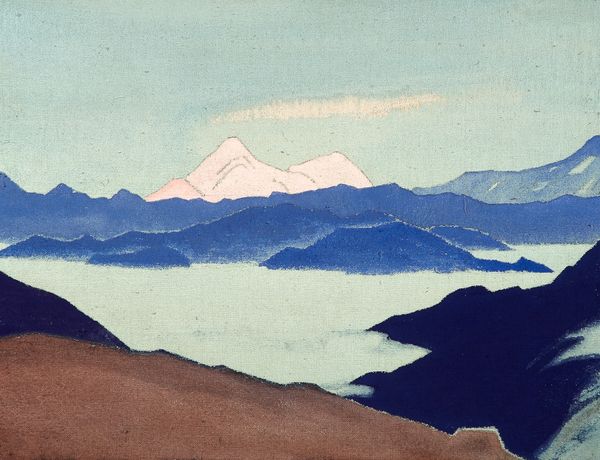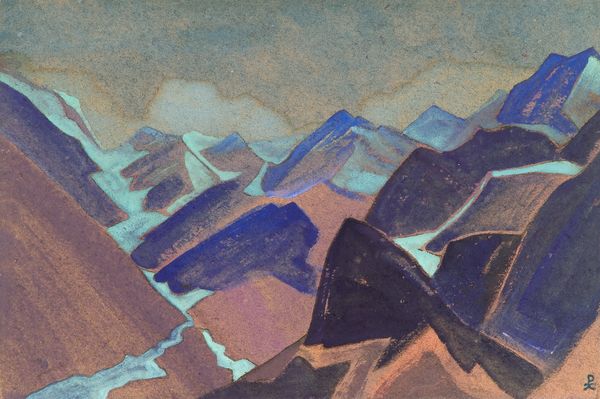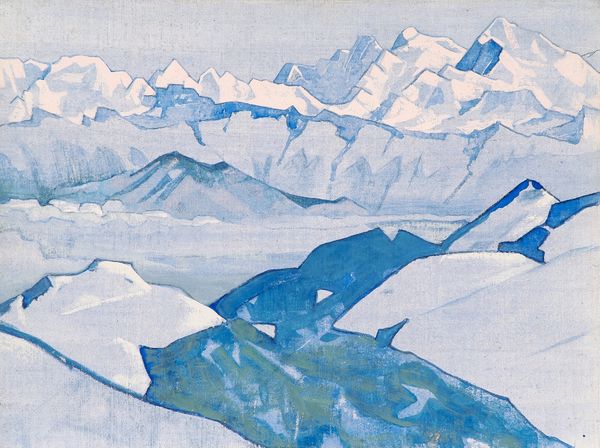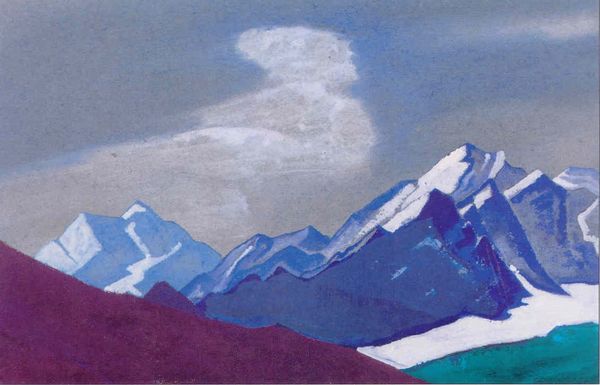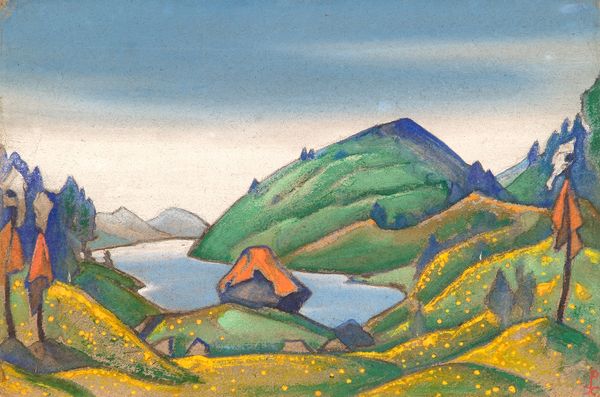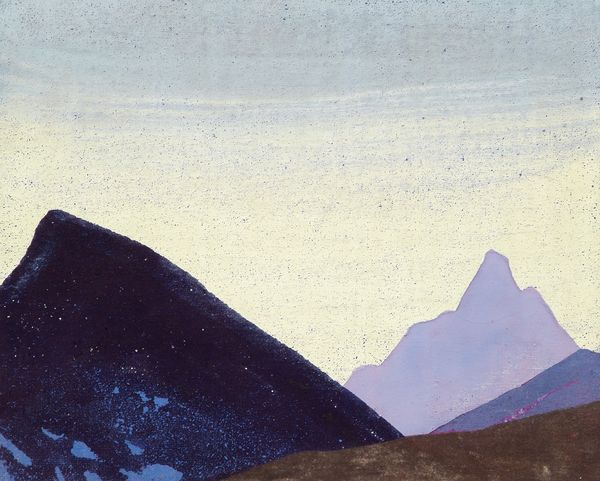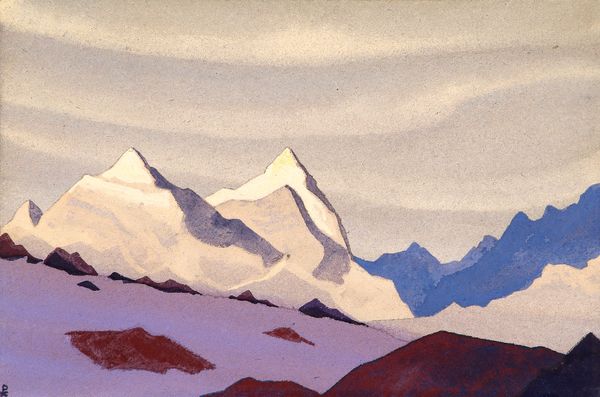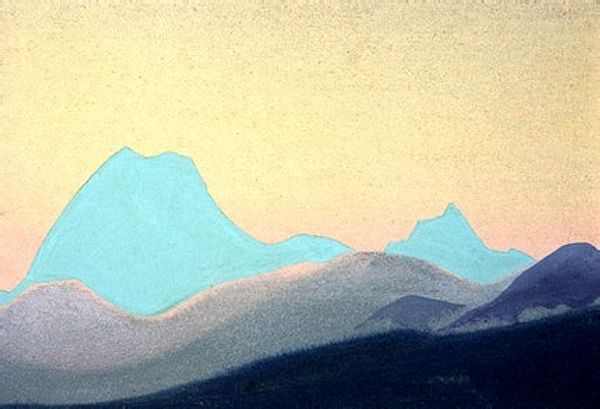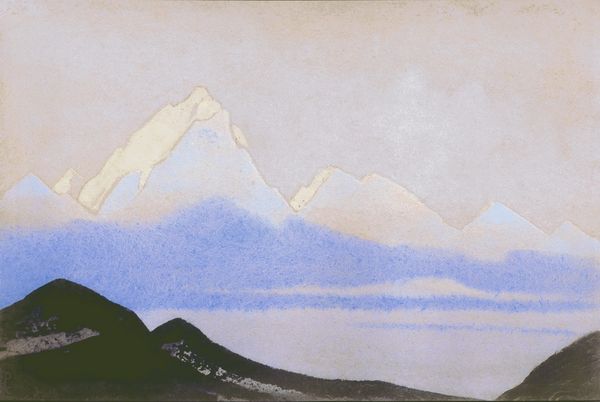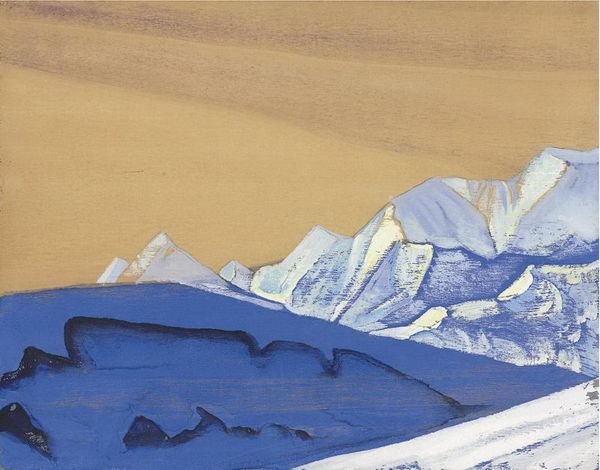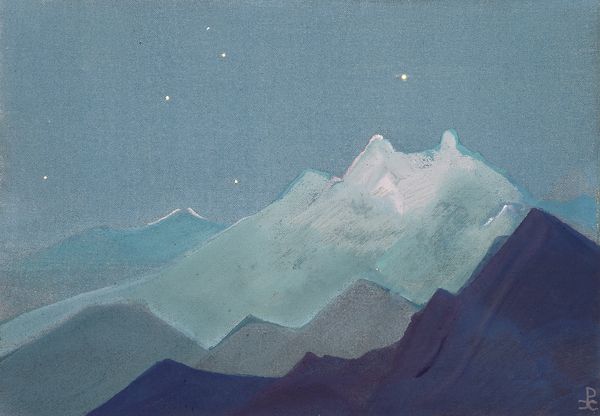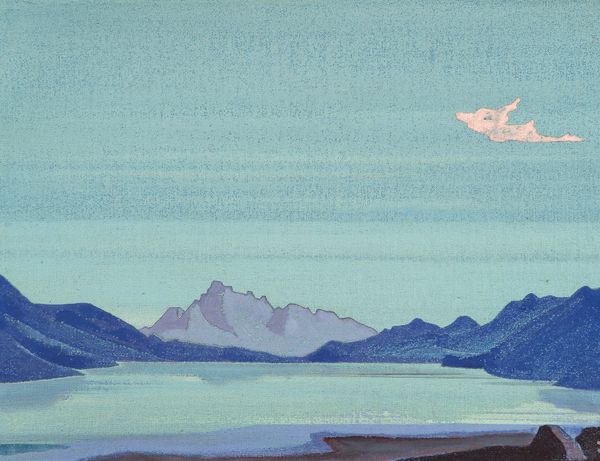
Copyright: Public domain
Nicholas Roerich painted "Kashmir" using watercolor, a medium that allows for luminous and translucent effects. The essence of watercolor lies in its fluid, ephemeral quality; the pigment suspended in water creates washes of color that capture the atmospheric perspective of the mountain landscape. This technique, originating from ancient traditions of manuscript illumination, allows for an expression of mood and spiritual depth beyond representational accuracy. The layering of these washes, one over the other, builds depth and complexity. By choosing watercolor, Roerich departs from the grand, labor-intensive methods associated with oil painting and monumental art, instead opting for a portable, intimate medium that democratizes the artistic process. The quick-drying nature of watercolor demands spontaneity and intuition, shifting the focus from meticulous planning to a direct, responsive engagement with the subject. Ultimately, the significance of "Kashmir" is enhanced through an understanding of the materials and techniques involved in its creation, highlighting how artistic choices can blur the boundaries between craft, fine art, and the artist’s personal journey.
Comments
No comments
Be the first to comment and join the conversation on the ultimate creative platform.
